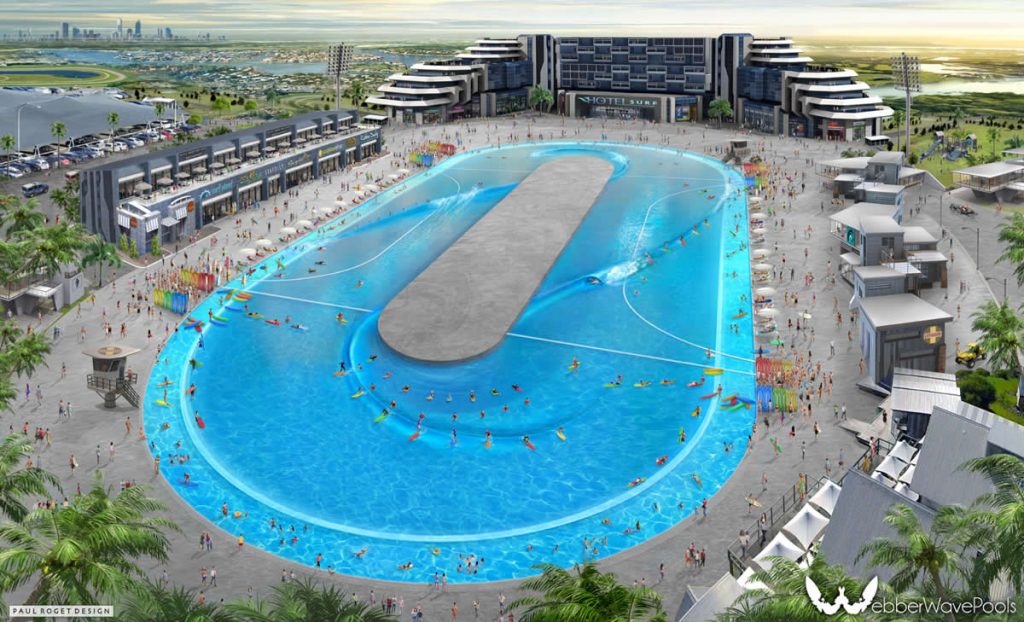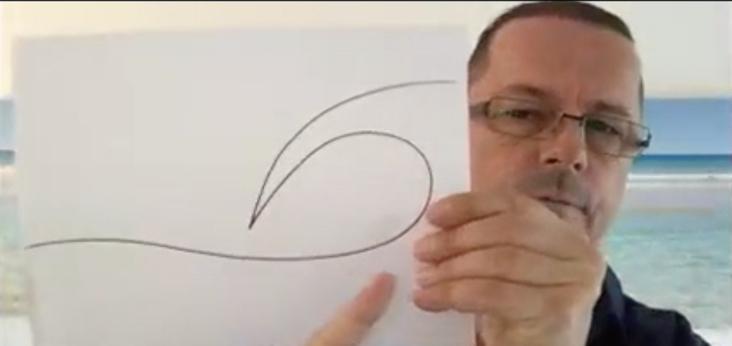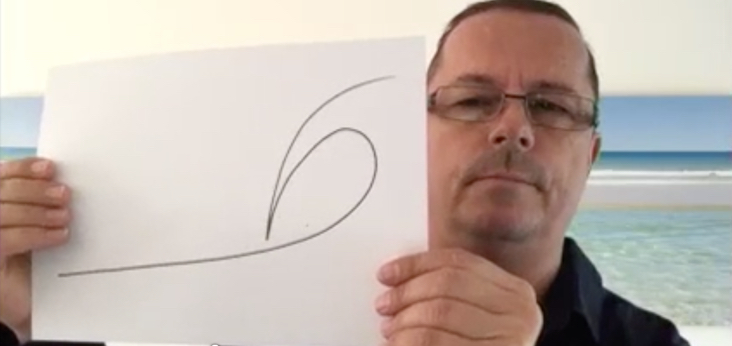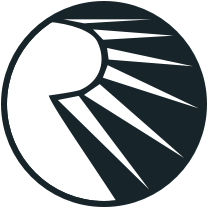Webber Wave Pools
Webber Wave Pool Technology
Webber Wave Pool technology creates waves by moving boat-like hulls through the water which displace water and create swells like a boat wake. The swells then travel towards the shallower linear gradient where they break in the same way as do waves along a point break.
Webber Wave Pool technology creates a kelvin wave, which tends to have a trough preceding the crest. It’s somewhat similar to Wavegarden Lagoon and KWSC technology, but both of those systems create a soliton wave which has no trough in front of the wave. Whether this factor is critical or not, is yet to be seen at full scale but field testing in rivers at 1m do seem to indicate a more open tube on kelvin waves.
The overall shape of the pool is a looped system comprised of two semi-circular ends joined by two linear gradients separated by an elongated island. Depending on the size of the wave pool, up to 4 hulls are driven around the central island. Each hull is attached to a carriage that is suspended underneath a steal rail track that runs around the island. Each carriage is propelled by its own electric motors which turns monorail wheels that drive the carriage along the track. The carriages can run around the island in either directions and the hull angles can be reversed allowing the wave pool to create rights or lefts.
The software used by the operator provides real-time control over the hull trim angle, draft, and speed of each carriage. Adjustments to these three factors result in immediate changes to the wave size and shape as the hulls moves around the island. In theory it would possible to create an infinite number of wave breaking patterns which then would solve one of the apparent shortcomings of existing wave pool technologies where the waves are almost identical from one to the next.
Generating waves in any closed body of water creates currents that can lead to unwanted turbulence and water movements that adversely affect wave shape or increase pool settling time. To counter this, Webber Wave Pools has a patented method for countering the current with water jets. The same water jets can also be used to create currents that change the shape of the waves. The patent for the current control system was recently granted at the PCT stage, which then gives Webber another 19 years of IP protection on this patent.
Read More
Wave Size and Shape
Without a full scale prototype, it’s difficult to be sure how large the wave will be at Webber Wave Pool installations. However, Greg Webber is confident that the technology can produce waves 2 meters (6.5 feet) high on the face of the wave and we’ve seen other similar technologies from KSWC and Wavegarden do the same. Webber’s field testing of waves at 1 meter and statements from the Australian Maritime College in Tasmania support this claim.
The shape of the primary wave is variable based on the operators control over the hull speed, angle, depth and current. For example, slowing a hull down or decreasing its angle and draft will result in a smaller wave. Similarly, increasing hull speed, trim angle and draft, while creating a current that flows toward the barrel will cause the barrel to open up wide and deeper. The soliton based wave pools seem to create a conical tube which means that it is hard to ride deep, whereas the kelvin waves seen in the river tests run by Greg and his team appear more cylindrical even without a reverse current.
In the images below, you can see drawings that Greg Webber did to compare the shape of a kelvin wave (left) to a soliton (right). Kelvin waves tend to produce rounder barrels. Webber Wave Pools has a patent on their method for creating kelvin wave, and they’ve successfully defended it against the Kelly Slater Wave Co. It will be interesting to see their first full scale installation, no doubt.
The length of ride on the main is directly correlated to the length of the pool, so it will vary based on the installation. However, Webber Wave Pools says that the main wave provides roughly 20-second rides. That could be a good mix between the shorter Wavegarden Cove waves (like URBNSURF and The Wave in Bristol) and the leg burners produced by KWSC.
In addition to the primary waves on the linear channels, which will generally target intermediate and advanced surfers, smaller secondary waves will be simultaneously generated for beginners at the end pools. As seen in the image above, the primary wave reforms into an open face wave before breaking again along both sides of the pool. Additionally, as the hulls wrap around the end of the central island, they create another beginner wave.
Capacity and Productivity
Webber Wave Pools says that their technology can generate “240 waves per hour at each of the 4 channels". Let’s break that down.
In a standard Webber Wave Pool with 4 hulls circulating the central island non-stop at a speed between 6 and 8 meters per second, the hulls pass a given point every 15 seconds. That means a ride at the main wave on one side of the pool occurs every 15 seconds on each side, or 2 rides total every 15 seconds. That means 480 rides (or waves) are generated every hour in the main breaks on either side of the island.
As the hulls rotate around the ends of the island, they form the beginner waves at both ends of the pool. The wave rate in these areas is the same as the wave rate in the main area, so in an hour there are an additional 480 beginner waves generated.
What really matters to customers is the number of waves they get to ride in a 1-hour session. This is heavily dependent on how the pool owner decides to operate their business, but Webber tends to suggest a low pricing structure so that customers will want to come back more frequently. If the waves vary to the degree that he is suggesting then it is possible to choose a random mode where the surfer will not know at all how the wave is going to break, which would effectively mimic what we experience surfing in the ocean, only more reliable, consistent and better.
Settling time is a major concern for all wave pool technology companies, and Webber Wave Pools is no exception. The same water jet system that allows for customizing wave shape also controls the unwanted currents, which can bring the pool back to a settled state very quickly.
The water jets may be a significant innovation which Webber hopes to see in action soon. Three pool builds in Orlando and South Carolina USA, are in the process of being negotiated. Webber Wave Pools USA licensee, Ocean Sports Developments, has an exclusive arrangement with Sports Facility Advisory, and a speech from it’s CEO Dev Pathik supports Webber’s confidence in the Current Control System tech (see videos).
The Wave Pool
The standard size of a Webber Wave Pool is 300m by 150m (4.5 hectares). A pool this size generates rides up to 20 seconds long and 960 rides per hour.
Controlling Webber Wave Pools
The Webber Wave Pool teams plans to provide software that allows operators to control the size, shape and frequency of waves in real-time.
The software used by the operator provides real-time control over the hull trim angle, draft, and speed of each carriage. Adjustments to hull trim, draft and speed of each carriage results in real-time changes to the wave. The operator can also put the wave pool in “random mode", where it will produce waves that randomly vary in shape and size within given parameters.
The software also allows the operator to immediately stop the hulls in case of emergency.
Highlights and Lowlights
| Hollower barrels. | |
| Patented technology. |
| Unproven. | |
| Current creation due to circular propagation of waves. |





